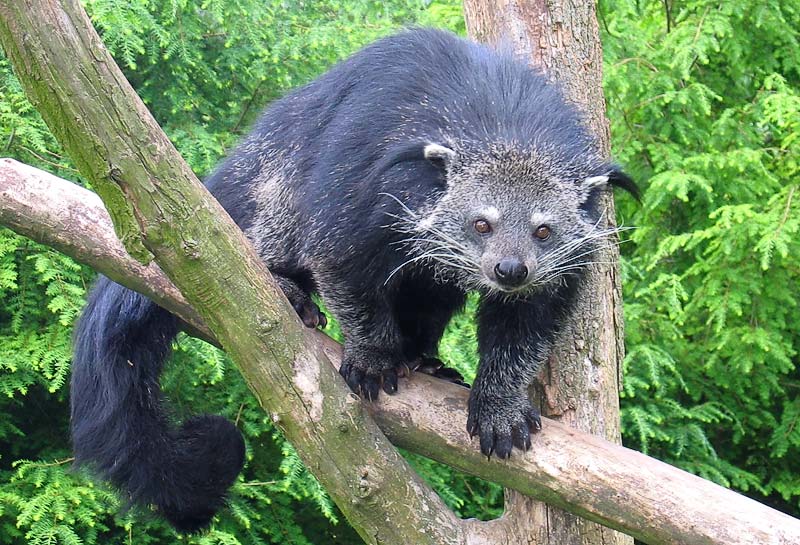Why are there so few odor words in most languages?
- Transfer
And why did these two groups of hunter-gatherers come up with so many of them?

Describe the banana. It is yellow, possibly with green corners. The peeled banana has a smooth, soft, mushy consistency. His taste is sweet, a little creamy. And it smells ... well, banana.
Each of the senses has a “lexical field”, a large palette of special words describing colors, sounds, tastes, textures. And the smell? In English, there are only three special words for the smell - smelly, fragrant, musty [stinky, fragrant, musty] - while the first two describe the subjective opinion of the sniffing, not the smell itself.
All other descriptions of the smell relate to its sources: we say that the object smells of cinnamon, roses, youth (referring to the song “Smells Like Teen Spirit” by Nirvana, or, possibly, to the deodorant Teen Spirit- approx. transl.), morning napalm (reference to the words of the character of the film "Apocalypse Today" - approx. transl.). Other feelings do not need such detours. We do not need to say “a banana looks like a lemon” - we can simply say that it is yellow. Experts working in the perfume and wine industry use metaphors like “decadent” or “oily” - but try to explain these terms to those who are not experts.
Some scientists believe that this fact suggests that a person pushed the smell to the back side of perception, relying on vision. This feeling is from the second echelon, which, according to Darwin, renders a man a “negligible service.” Others believe that the smell is basically impossible to describe, and that olfactory abstraction is impossible.. Kant wrote that "The smell does not allow one to describe himself directly, but only by comparing with other feelings." And when Jean-Baptiste Grenouille, the protagonist of the novel " Perfume. The Story of a Murderer, " can unmistakably identify smells, memorize them and mix them in your head, his ability confuses us and seems supernatural, precisely because we are in such things extremely bad.
But not all. In Southeast Asia, there are at least two groups of hunter-gatherers who would turn their heads at such statements. Asif Majeed [ ASIFA Majid ] of Redbaudskogo University in the Netherlands found that in the languages of ethnic Jahan from Malaysia and Manik Thailand contains from 12 to 15 devoted to smell words.
“These terms mean a lot to them,” she says. - They constantly appear in speech. They are familiar to small children. They are included in the main vocabulary. They are not used to refer to tastes or edibility. They are meant only for smells. ”
For example, the word "litpit" describes the smell of binturong(They are also called "cat bears" because of the external similarity of the body structure with the cat and the manner of movement on the ground like a bear). This two-meter animal resembling a shaggy otter with black fur is known for its odorous glands emit a smell resembling popcorn. But “ltpit” does not mean popcorn - this term does not describe the source of the smell. The same word is used for soap, flowers and durian fruit, and refers to one of those odor properties that the western nose cannot catch.

Binturong
Another word refers to the smell of gasoline, smoke, bat litter, a type of centipede, wild ginger root, wild mango tree, etc. One of the words, apparently, refers to the smell of fried food. The other is about protein-type things, crushed lice, and other "blood smells luring tigers."
These terms do not denote general concepts related to other senses, such as edibility. “Their meaning does not apply to tastes, sensations, pain, or other conditions. They describe only the smell, - says Majid. “Just as you would describe a tomato as red, a person from Jahai will describe the smell of binturong as ltpit.”
For the first time, Majid heard about Jahai from her colleague Niclas Burenhult, who worked with them for many years and wrote the only formal grammar of their language. He noticed that they have special words for smells. Regarding this with suspicion, she flew to Malaysia to conduct an investigation.
She talked to them, studied their language and culture. She tested them on the standard smells test (Brief Smell Identification Test), which uses fixed odors. She walked with them through the jungle, and asked them to describe the smells of what was around them. And through various checks, she showed that they call smells as consistently, simply and precisely as English-speaking people would call colors, without any language problems and somersaults, to which people of Western culture would resort. The same is true for the Manic .
These two groups prove that smells, despite popular opinion, can be described. “This job has changed my ideas!” Says Tim Jacobfrom Cardiff University. “Odor information directly affects behavior, mood, and evokes memories,” he says. - Smell language is not needed. So I thought before. But, obviously, some cultures have developed a vocabulary for smells that is useful and necessary. ”
Or, as Majeed writes: " Smells can be expressed in the language if you speak the right language ."
And if you speak the right language, it changes how you perceive the world. The smell is an integral part of the culture of the jahai, which distinguishes it from the western. “When we were there, Niklas and I said that we were brother and sister. Once we were told that we should not sit too close so that our smells do not mix - this would be a form of incest, she says. - There are social prohibitions expressed through smells. Some dishes cannot be cooked in the same hearth with others, because their smells will mix ”.
They also very well distinguish smells, at least, much better, than Majid. “We walked through the jungle during the wild ginger season,” she recalls. - One would think that this is one thing and one smell - but no. The flower does not smell like the stem, and the stem smells differently, depending on whether it is compressed or broken. I tried to call smells, and the kids ran after me and laughed. Type: how can you be such an idiot? ".
Next year, she plans to return to the tribe to find out how well they remember the smells. She also thinks about collecting examples of smells that they describe in words, and see if she can isolate the chemical compounds that are common to them. She also wants to compare their languages and the languages of other tribes of Southeast Asia, in order to understand how the words describing smells evolved from previous languages.
“This job is very important because it raises issues that were previously considered strange,” says Charles Spence.from the University of Oxford. He is referring to people from Western, educated, industrial, wealthy and democratic countries - those who do most psychological research. “Anthropologists have been saying this for a long time, but psychologists ignore their advice. It would be great to look at these beautiful examples, lifting the smell from the bottom of the hierarchy. ”
Jacob also believes that Jahai and Manik can give us a better understanding of the evolution of smell. For example, it is obvious why unpleasant smells repel us - they are associated with decaying food, waste products and other things that potentially carry disease. But why do we like pleasant smells? Perhaps I’m prompted to give us manic people: the word for binturong is also used for medicinal plants with pleasant smells, which they use as perfume and necklaces.
“It seems to me that this is a revolutionary discovery,” says Jacob. - Early cultures collected pleasantly smelling plants, because they had medical or medicinal properties, or they personified purity and hygiene. And now, finally, an example of the positive effect of pleasant smells, which gives adaptation advantages. Moreover, he points to the origins of our interest in perfumery. ”
Majeed rightly says: “We spend millions on the fragrance and fragrance industry. It’s too easy to assume that smell doesn’t matter to people. ”
